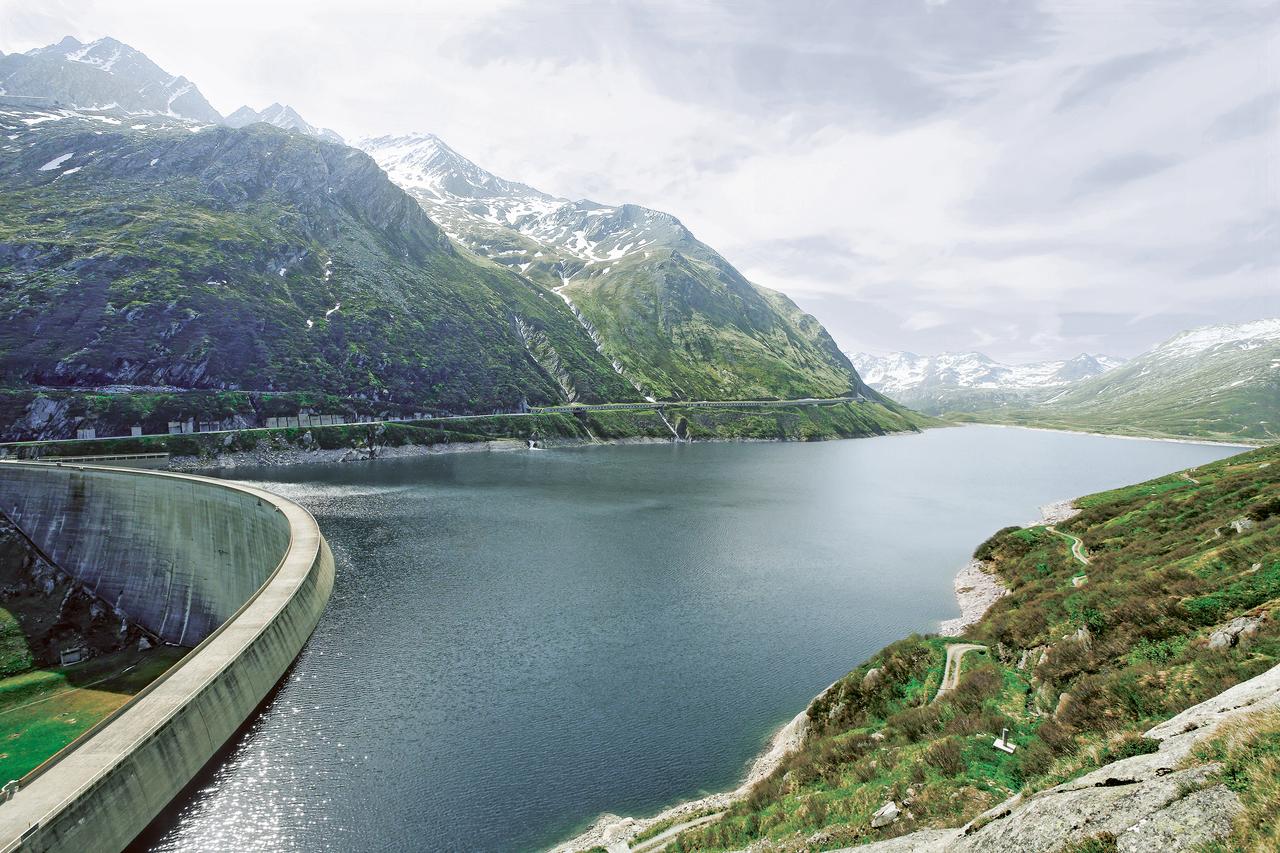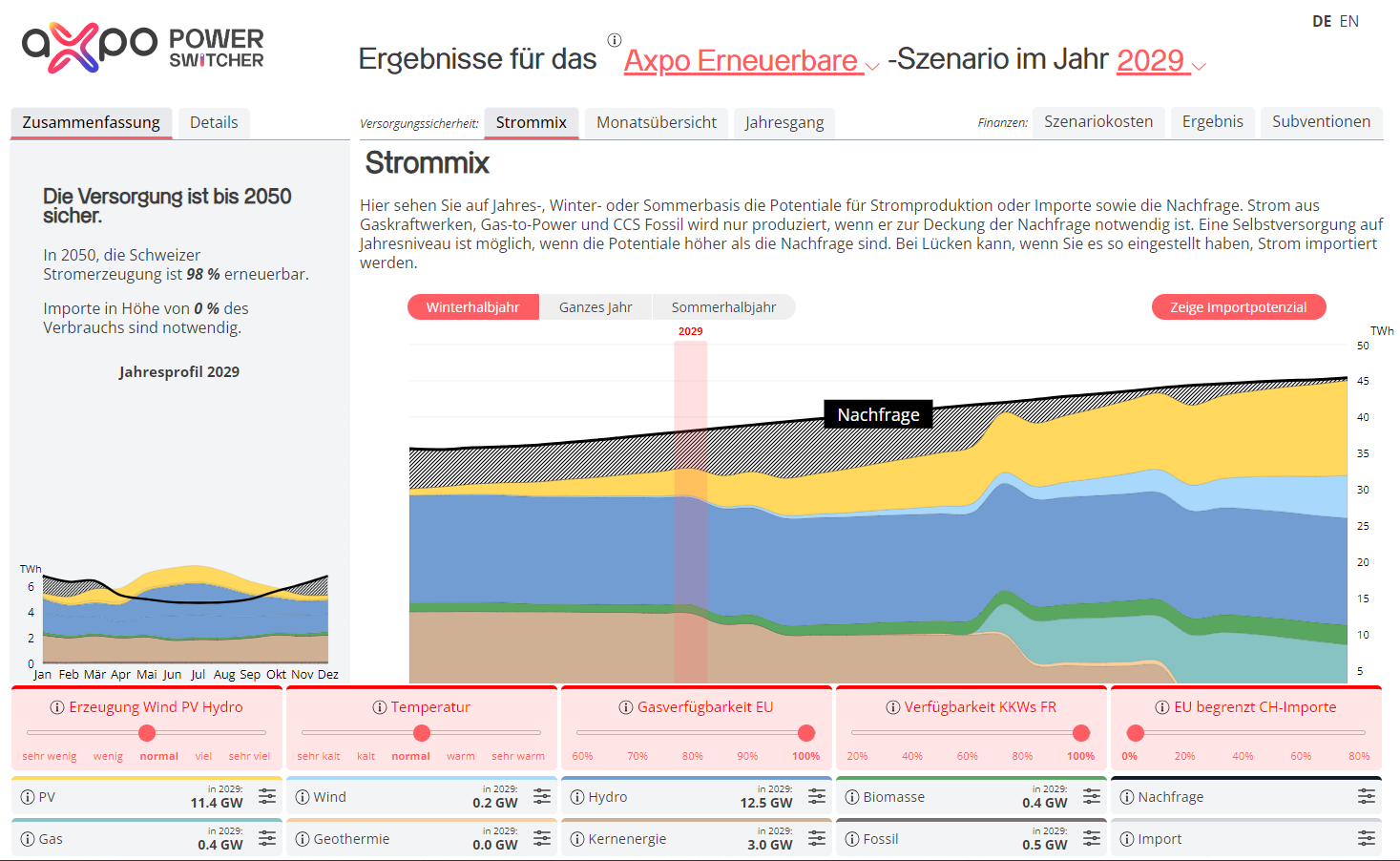21.08.2025 | The digital future’s hunger for power
What the boom in AI and data centres means for the power grid
More and more data centres are built and connected to power grids. There are currently around a hundred such facilities in Switzerland – and the number is rising rapidly. The main drivers are the increasing use of artificial intelligence, cloud services and streaming services. Data centres are the backbone of the digital world – and real power guzzlers. They require as much electrical power as a large city – for example, as St. Gallen with 75 megawatts.
According to experts, the power consumption of data centres almost doubled between 2019 and 2024: from 2.1 to 4 terawatt hours. Axpo is also feeling the impact of the increasing number of grid connections and the amount of electricity requested by data centres. We talk to our grid specialists Leo Lowack, Head of Strategic Asset Management, and Philipp Schütt, Head of Grid Economics, about how we as a distribution grid operator are dealing with this trend, what the technical and economic hurdles are, and what solutions might look like.
Data centres are currently popping up like mushrooms. What does this mean for Axpo's high-voltage grid?
Leo: As a grid operator, we are obliged under the Electricity Supply Act to grant non-discriminatory access to the grid. We treat all grid connection requests in the same way, evaluating and connecting them to our distribution grid according to the same criteria. Naturally, large loads influence the load flow in our grid. However, we only allow connections if the required loads can be served by the existing or planned infrastructure and the high level of supply security in the Axpo grid remains guaranteed.
Who are you dealing with?
Philipp: We do not connect end consumers such as data centres directly to our grid, but rather connect them to our partners, the downstream cantonal utilities. However, the power must still be provided via the Axpo grid. As a rule, connection requests come from international investors. They build data centres to provide cloud storage and AI computing capacity. Once they are up and running, computing power is leased out.
The power requirements of data centres have risen massively. How do you deal with this?
Leo: Power ratings of over 50 MW or even around 100 MW are no longer uncommon. This means that individual data centres can match the power requirements of a large Swiss city (for comparison: the load of St. Gallen, with around 80,000 inhabitants, is 75 MW). This has a massive impact on our high-voltage grid. That is why we are continuously developing measures to expand the existing capacities in the grid in a targeted manner.
What technical challenges are you facing?
Leo: From a technical point of view, the amount of power requested is a challenge. On the other hand, behind every request there is a business case in which time plays a decisive role. The approval processes in Switzerland, for example, are often too slow for new overhead lines. There have been cases where requests have been withdrawn because the predicted commissioning date was too late and ruined the business case. In addition, the number of requests has increased enormously, requiring extensive studies and careful coordination. Every approval has a significant impact on the available grid capacity for other consumers throughout the region. All data centres are pushing to connect to the grid as quickly as possible. But even after connection, it can take months or even years for the data centres to actually draw power.
Are we already reaching the limits of the Axpo distribution grid’s capacity?
Leo: Our grid planning team plans Axpo’s grids for the long term. Since projects to strengthen the infrastructure take a lot of time, a proactive approach is essential to ensure a solid security of supply. Based on the binding scenario framework of the Swiss Federal Office of Energy, we have developed what we call target grids for the years 2030 and 2040 (see this article). However, the scenario framework does not fully reflect the current trend towards more data centres.
What does that mean?
Leo: It means that we only plan projects to increase grid capacity for data centres once we have a binding commitment for the corresponding grid connection. In doing so, we seek the most economically efficient solution, which is also the most cost-effective for all electricity consumers. To this end, we are in close contact with Swissgrid and the cantonal utilities. Axpo is currently reviewing how we can respond strategically to the increasing number of large consumers.
What are you doing to prevent grid overloads?
Leo: To prevent grid overloads, we design our grid to be fail-safe by incorporating redundancies. This means that the failure of one element does not affect the security of supply. We also adhere to this principle when connecting data centres.
From your point of view, would it be better if investors built their data centres outside the Axpo grid area?
Philipp: Data centres are ideal customers because of their relatively constant and high load. They use the grid evenly and pay for grid usage. The challenge lies in forecasting the load of these customers, which is often uncertain and challenging in terms of grid design. Basically, we never see the actual power consumption of the data centres, but only the total power at the grid connection point to the downstream distribution grid. The feed-in and consumption of solar systems, batteries, households and industries also play a role in distribution grid connections. As data centers in our network often forecast more power than they actually consume, we use the network cost contribution to incentivize more realistic forecasts.
Who bears the costs for the grid connection, grid usage and grid operation?
Philipp: The customer bears the costs for the grid connection on a one-off basis via so-called connection fees, or more precisely: grid connection and grid cost contributions. The grid connection fee corresponds to the costs of establishing the grid connection itself. The customer has to pay a grid cost fee for the upstream grid. After that, they are charged grid usage fees according to their energy consumption.
Cover image: CKW Datacenter in Zug
Data centres
Every time we visit a website, start a video stream, use an app or query ChatGPT, data streams run in the background through data centres. There, data is stored, processed and made available around the clock. The facilities consist of a large number of servers, network systems and cooling technology – all in highly secure buildings designed for maximum reliability. Because the servers run continuously, the power requirements are enormous – not only for operation, but also for cooling. Data centres are therefore not only digital hubs, but also major consumers in the power grid with specific requirements in terms of supply security, location conditions and connected load.




.jpg)





